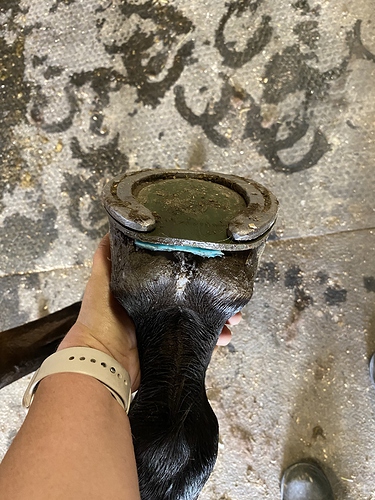I’ve been meaning to take and post pics for months but I finally got around to it the other day-and of course, they aren’t the clearest pics which I didn’t realize until I got home🙄 Hopefully they are good enough!
These are the feet of my 18 year old gelding. He’s got hock OA, neck OA, etc. I’ve been contemplating what, if anything (as he’s semi-retired), I try for his neck but just recently while evaluating his posture I noticed he was standing camped under in the back-took rads, he was neutral, put wedges in the back, and he’s starting to look better back there.
What I have been noticing more so lately now that it’s on my radar, is he also stands a little camped under in the front. It’s not super noticeable but when I point it out to others they do see it. Could be his neck, but could be his feet. He’s really knotted up around his chest/shoulders/thoracic sling area which I’ve always chocked up to the neck, but I really do wonder if he has some heel soreness or something. I’ve also noticed when standing on Sure Foot pads that he prefers putting weight on the toe. I’m going to ask my vet and have this looked at-but in the meantime I need to educate myself on evaluating a good shoe job with correct hoof angles.
Does his heel look really underrun? Would it make sense for his heels to be sore based off these feet?







